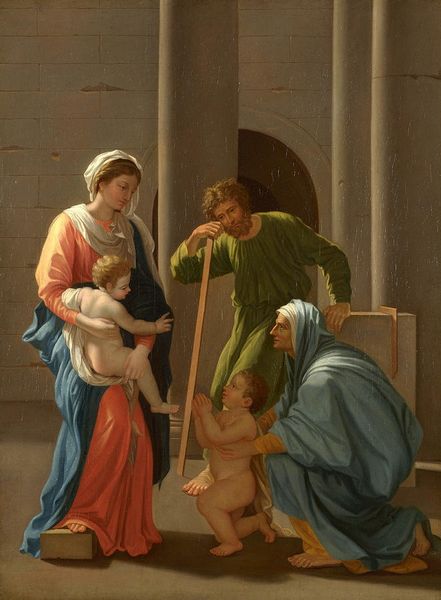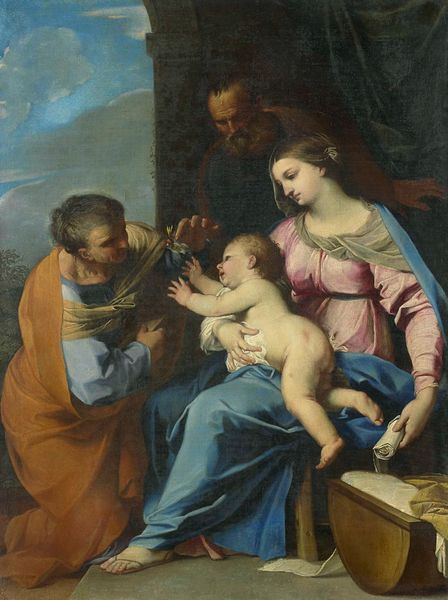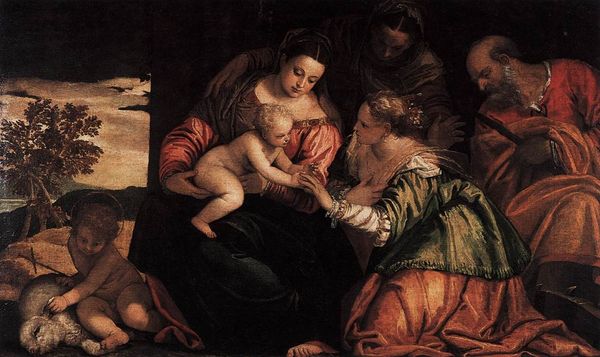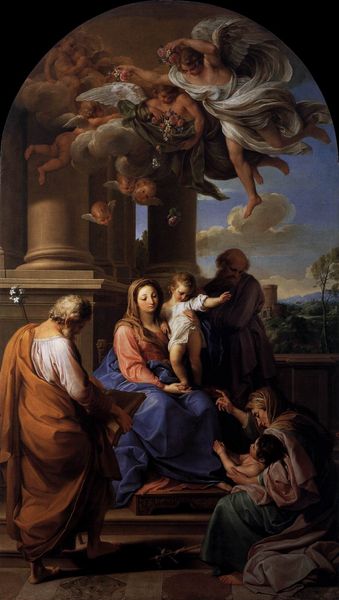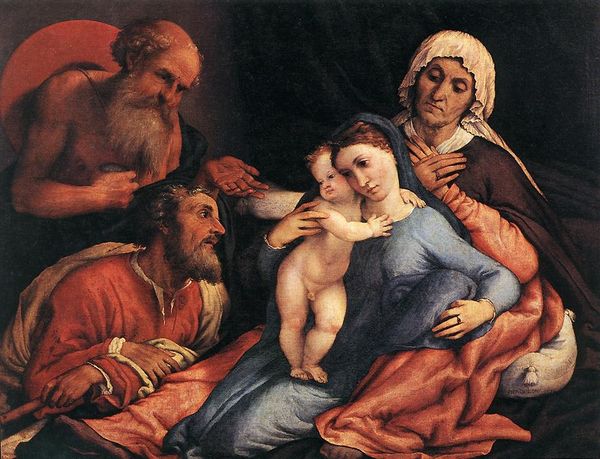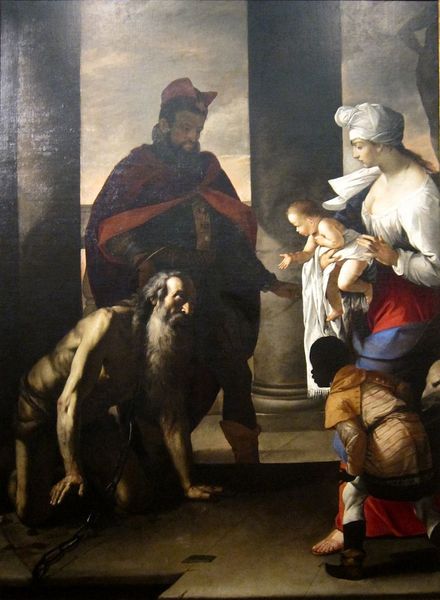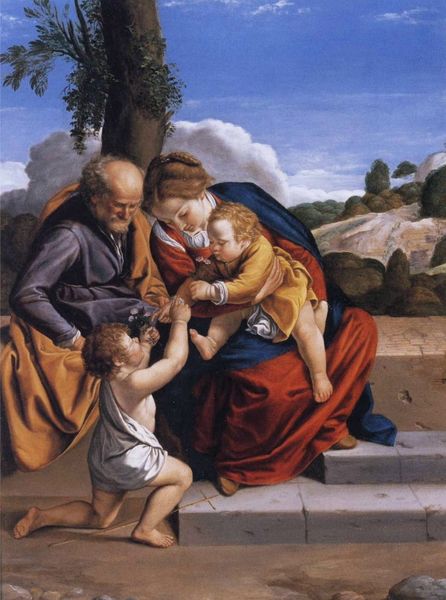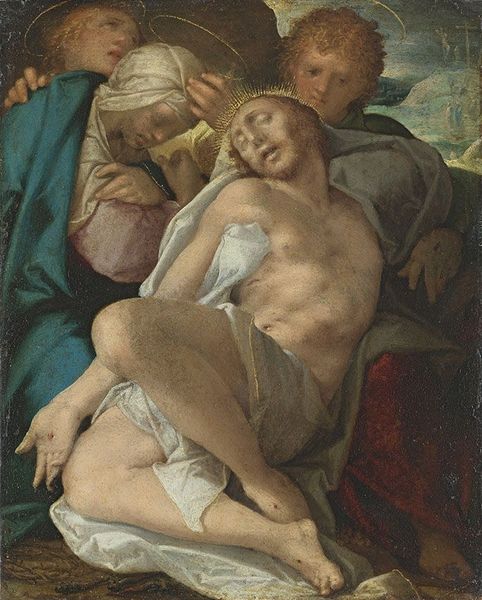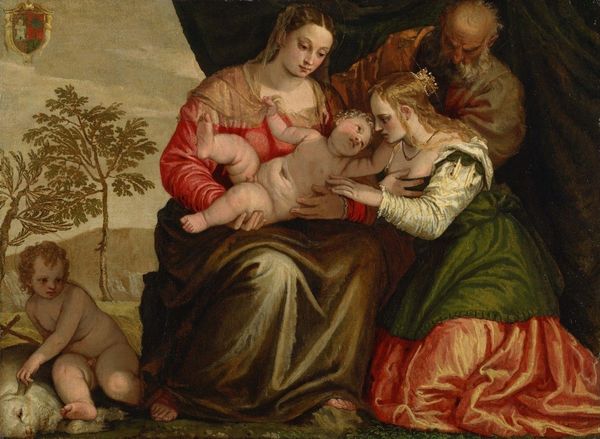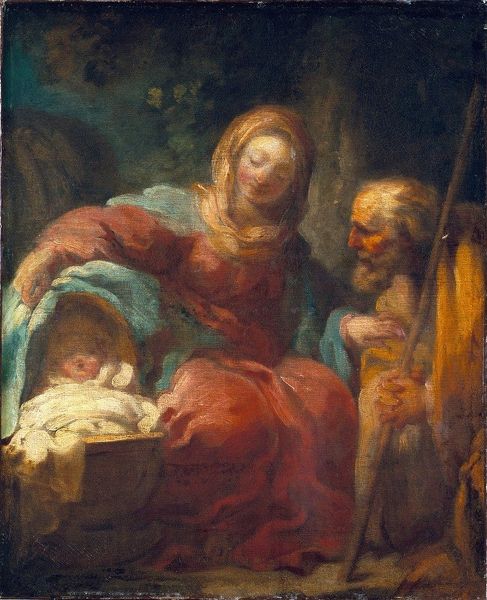
painting, oil-paint
#
portrait
#
baroque
#
painting
#
oil-paint
#
figuration
#
oil painting
#
history-painting
#
italian-renaissance
Copyright: Public Domain: Artvee
Curator: Standing before us is Nicolas Poussin's "The Holy Family," painted in 1641. Poussin, of course, was a key figure in the French Baroque style, although he spent most of his career in Rome. Editor: It's striking how contained the composition feels, almost theatrical. There’s a very intimate quality despite the formal architectural setting. It radiates a calm serenity. Curator: Indeed. The architectural framework lends a gravity to the scene, emphasizing the timeless ideals of family and virtue Poussin wanted to project for his French patrons, particularly those involved in religious orders or the court. It’s interesting that he situates the Holy Family within a rational, ordered space – very much a hallmark of the Baroque period, albeit with classical influences. Editor: I’m drawn to the interplay of gazes. Mary looks tenderly at Jesus, drawing our eye there. Joseph in the background is looking on, but a distance exists despite being physically present, that distance creates a symbolic triangle connecting care, faith, and presence. Curator: Right, Joseph is present, partaking in what seems to be an everyday activity. This mundane element grounds the image, reflecting the belief in the importance of domestic life, in an attempt to encourage devotion among wider French audiences. Editor: Note the cool colors: blues and whites balanced with warm hues. That use of color supports my reading. The white symbolizing purity, which serves the painting’s purpose. The child lifting his hands echoes sentiments found in paintings and sculptures from antiquity. The image borrows symbols that predate Christian artwork in order to embed and normalize these beliefs. Curator: You are right that the painting participates in what was a strong push toward an art of didacticism at the time, particularly the Italian-influenced classicism that promoted those clear and ideal forms. Poussin did an effective job aligning religious subjects and contemporary audiences within the context of Baroque principles. Editor: Definitely, these iconographic echoes point to the universal ideas this family came to symbolize. Understanding Poussin's intentions reveals a calculated attempt to portray divinity in a humanist form. Curator: Yes. Considering this through the lens of the period in which Poussin created the work provides great insight. The classicizing restraint really exemplifies his role as a pivotal figure of the Baroque. Editor: Poussin's piece truly acts as a mirror of cultural memory. It reveals how certain archetypes persist to shape how society defines devotion.
Comments
No comments
Be the first to comment and join the conversation on the ultimate creative platform.
